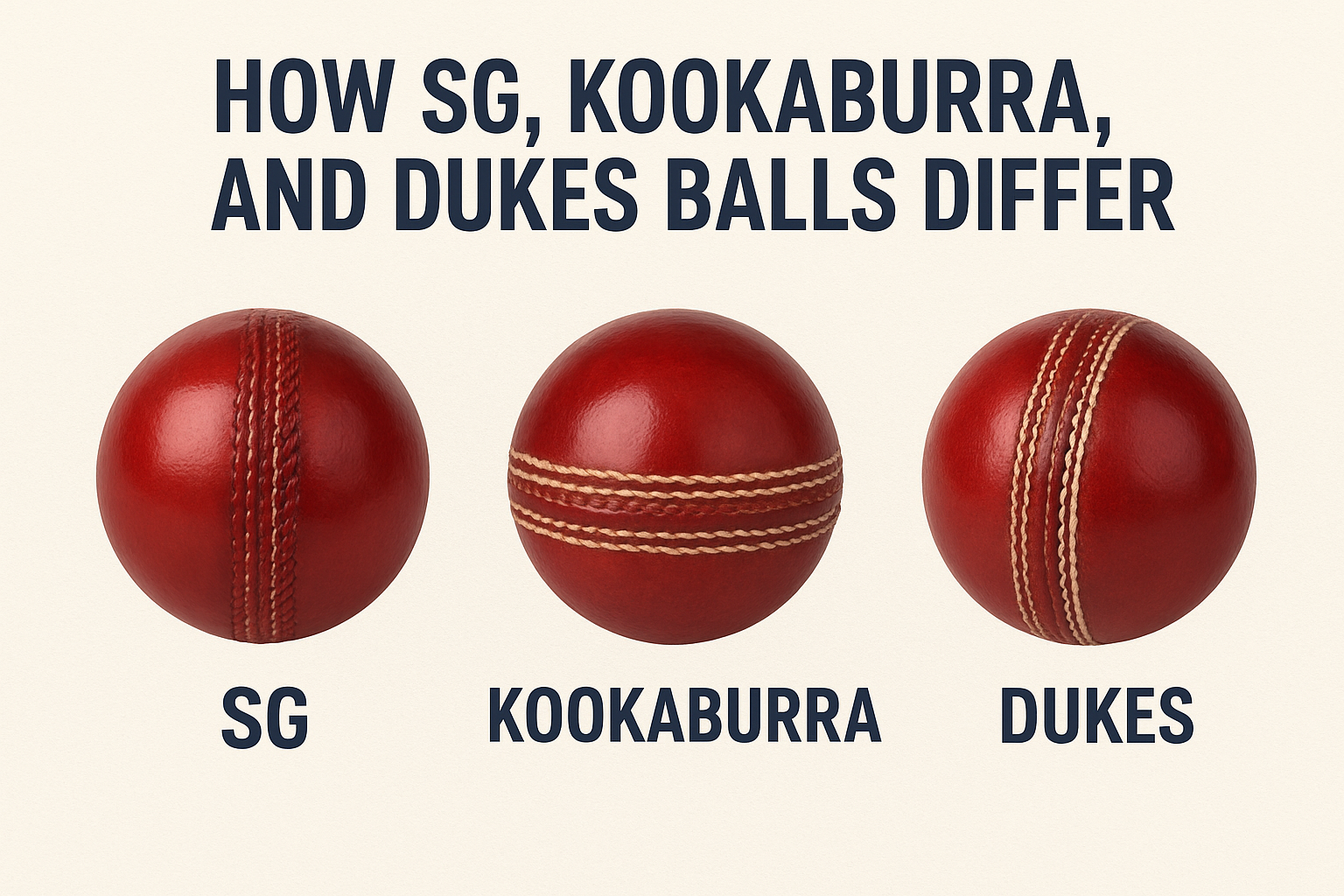If you play cricket in the USA—whether in local leagues, college tournaments, or weekend matches—you’ve probably come across different types of cricket balls. Among them, SG, Kookaburra, and Dukes are the three most widely used worldwide. Each ball behaves differently, lasts differently, and even influences the style of bowling and batting you see on the field.
Here’s a clear breakdown to help you understand how they differ and which one may be right for your game.
1. SG Cricket Balls: India’s Trusted Workhorse
Made in: India
Famous for: Durability, prominent seam, spin-friendly behavior
Key Features
-
Hand-stitched seam that stays upright for long periods
-
Thicker, more pronounced seam, great for spinners and seamers
-
Harder core that holds shape longer in hot conditions
-
Excellent for dry, abrasive pitches, which are common in many parts of Asia
How They Play
SG balls grip the surface well, offering extra bite for spinners and consistent seam for medium pacers. Batters often notice the ball staying harder longer, meaning the bounce remains true for many overs.
Best for USA players when…
-
You're playing on turf wickets or hard surfaces
-
You want a ball that maintains its seam and swing for longer
-
Spin bowlers are a key part of your team strategy
2. Kookaburra Cricket Balls: The World Standard
Made in: Australia
Famous for: Consistency, limited early swing, widely used in international cricket
Key Features
-
Machine-stitched seam, resulting in a smoother finish
-
Seam tends to flatten quicker
-
Provides modest swing, especially in the first 10–15 overs
-
Very predictable and standardized across batches
How They Play
Kookaburra balls are known for a shorter swing window. Pacers can extract swing early, but once the seam settles, it becomes more about hitting the deck hard. Spinners generally come into play later as the ball softens.
Best for USA players when…
-
You play in multi-day leagues where consistency matters
-
You want a ball closer to what is used in ICC white-ball formats
-
You're training for tournaments abroad and want familiarity
🏴 3. Dukes Cricket Balls: The Swing Bowler’s Dream
Made in: England
Famous for: Long-lasting swing, hand-stitched seam, performance in damp conditions
Key Features
-
Entirely hand-stitched, including the internal stitching
-
Seam is sharper and darker, making it more pronounced
-
Offers extended natural swing, even after 40–50 overs
-
Performs exceptionally in cooler, humid climates
How They Play
Dukes balls are loved by swing bowlers because they remain balanced, shiny, and swing-friendly deep into the innings. Batters need strong technique when facing it, especially under cloudy skies.
Best for USA players when…
-
The match is in cooler states or during spring/fall
-
You want to develop swing bowling skills
-
Your league prefers longer-lasting premium balls
Side-by-Side Comparison
| Feature | SG | Kookaburra | Dukes |
|---|---|---|---|
| Stitching | Hand-stitched | Machine-stitched | Fully hand-stitched |
| Seam | Thick, long-lasting | Flattens faster | Pronounced and durable |
| Swing | Moderate, improves with wear | Early swing only | Consistent, long-lasting swing |
| Best Conditions | Dry, hard pitches | Standardized wickets | Cool, humid climates |
| Used In | India | Australia & ICC events | England & West Indies |
Which Ball Should You Choose in the USA?
-
For durability & spin: Go with SG.
-
For international match-like training: Choose Kookaburra.
-
For mastering swing bowling: Pick the Dukes.
Each ball brings a distinct character to the game—so your choice should match your conditions, team style, and skill development goals.
